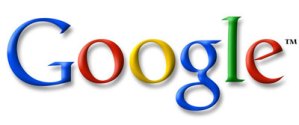 Google recently went on a spending spree, scooping up social media companies galore, while being coy about its plans. According to the Wall Street Journal, Google CEO Eric Schmidt told Zeitgeist conference attendees in Arizona to look out for new social networking products before the end of the year. While these are expected to be launched as part of Google Me, details are skimpy at this time.
Google recently went on a spending spree, scooping up social media companies galore, while being coy about its plans. According to the Wall Street Journal, Google CEO Eric Schmidt told Zeitgeist conference attendees in Arizona to look out for new social networking products before the end of the year. While these are expected to be launched as part of Google Me, details are skimpy at this time.
Instead of an all-out Facebook rival, Google plans to introduce social networking add-ons that will integrate with its core products, including Gmail and YouTube. For example, YouTube will share information in real-time about what videos are being watched by the people on your friend-list.
“With your permission, knowing more about who your friends are, we can provide more tailored recommendations. Search quality can get better,” said Schmidt.
Considering the number of gaming companies Google has acquired over the last few months, social gaming will likely be a big part of this offering. Acquired companies include virtual currency company Jambool, mobile games provider SocialDeck, and social game developer Slide. The company is also working on a partnership with social gaming heavyweight Zynga.
Google has struggled in the social networking space, with the long-forgotten Orkut and the more recent Buzz. Even so, Google kept shopping, adding like.com, a “visual search” technology, content aggregator Angstro, question/answer service Aardvark, and microblogging service Jaiku to its portfolio. Its own Social Search moved out of Google Labs earlier this year, as well.
There may be a slight hiccup in Google’s grand plans: Facebook. But not in the Facebook-killer kind of way. Currently, Google allows Facebook to let users pull over Gmail contacts as part of the FriendFinder application. Google wants similar access from Facebook, to pull user data into its platform, said Schmidt.
Considering the odds of that ever happening are not likely, Schmidt has just one thing to say: “Failing that, there are other ways to get that information,” said Schmidt.




